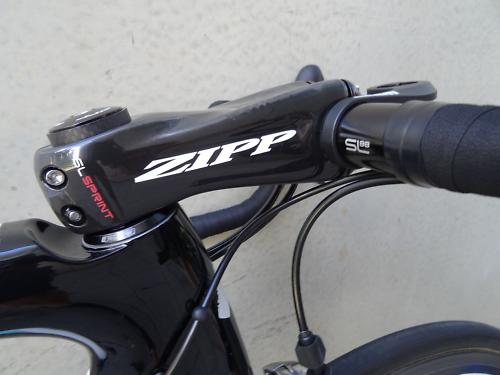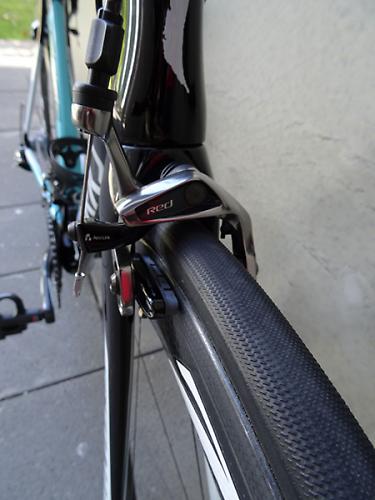- News
- Reviews
- Bikes
- Components
- Bar tape & grips
- Bottom brackets
- Brake & gear cables
- Brake & STI levers
- Brake pads & spares
- Brakes
- Cassettes & freewheels
- Chains
- Chainsets & chainrings
- Derailleurs - front
- Derailleurs - rear
- Forks
- Gear levers & shifters
- Groupsets
- Handlebars & extensions
- Headsets
- Hubs
- Inner tubes
- Pedals
- Quick releases & skewers
- Saddles
- Seatposts
- Stems
- Wheels
- Tyres
- Tubeless valves
- Accessories
- Accessories - misc
- Computer mounts
- Bags
- Bar ends
- Bike bags & cases
- Bottle cages
- Bottles
- Cameras
- Car racks
- Child seats
- Computers
- Glasses
- GPS units
- Helmets
- Lights - front
- Lights - rear
- Lights - sets
- Locks
- Mirrors
- Mudguards
- Racks
- Pumps & CO2 inflators
- Puncture kits
- Reflectives
- Smart watches
- Stands and racks
- Trailers
- Clothing
- Health, fitness and nutrition
- Tools and workshop
- Miscellaneous
- Buyers Guides
- Features
- Forum
- Recommends
- Podcast
TECH NEWS
2014 WorldTour bikes: Mark Renshaw’s Specialized Venge
After a couple of years apart, Mark Renshaw has joined Omega Pharma-Quick Step to be reunited with Mark Cavendish. The change of team also means a new bike for Renshaw, switching from Giant to Specialized.
Like Cav, he’ll be riding the Venge, the US company’s dedicated aero bike. Renshaw gave his new bike and kit its first public outing at the recent Tour Down Under, where the team also unveiled their new jersey design for the first time.

At He's 5' 10" tall, Renshaw rides a 54cm size frame with a 120mm stem. Naturally, the stem is ‘slammed’, with just one 5mm carbon spacer above the stem. The SL Sprint stem from Zipp is claimed by the company to have the highest stiffness-to-weight ratio of any stem on the market.
The team is supplied by SRAM and will use its RED 22 groupset, the company’s new 11-speed offering - this is the first season when we'll see all the teams on 11-speed bikes. The only notable exception is the Specialized S-Works crankset, which Specialized likes to see its sponsored teams using. Renshaw used a 53/39 chainset partnered with an 11-26 cassette out back for the TDU. He rides standard 172.5mm crank arms.

He’s also using SRAM’s Quarq power meter, housed in the driveside crank, to measure his power. A Quarq-branded Garmin Edge is used to display and record the data, and is mounted on the bars using SRAM’s out-front mount.
SRAM don’t just supply the team with its groupset, it has done a deal that sees the team its Zipp wheels and finishing kit too. We’re seeing more teams using the wheels and finishing kit supplied by the groupset manufacturers, so in this regard Omega isn’t alone.

The choice of Zipp 404 Firecrest Tubular tyres is one we’ll see Renshaw race most of the season. He’s using narrow 40cm Zipp Service Course SL-88 handlebars. There has been a bit of a shift towards narrower bars among the sprinters, regardless of their height, most likely in an effort to reduce their frontal surface area and improve aerodynamics.

The Venge draws on the F1 team's aerodynamic expertise with a a 3:1 airfoil fork with a narrow leading edge, along with a narrow (1 1/8in at the top to 1 3/8in at the crown) tapered head tube to minimise the frontal area leading to a reduction in drag. The shaped seat tube curves around the rear wheel and the seat stays have an airfoil shape with a flat outer surface and rounded inner surface to improve the performance in crosswinds. Naturally, cables are routed internally.
Photos reproduced with kind permission of SRAM. More at www.theroaddiaries.com
David worked on the road.cc tech team from 2012-2020. Previously he was editor of Bikemagic.com and before that staff writer at RCUK. He's a seasoned cyclist of all disciplines, from road to mountain biking, touring to cyclo-cross, he only wishes he had time to ride them all. He's mildly competitive, though he'll never admit it, and is a frequent road racer but is too lazy to do really well. He currently resides in the Cotswolds, and you can now find him over on his own YouTube channel David Arthur - Just Ride Bikes.
Latest Comments
- OldRidgeback 2 sec ago
The fine was only dropped because it was such an embarassing move by The Home Office. I suspect that had there been no press coverage, the fine...
- Velo-drone 5 min 57 sec ago
I think that you deserve some opprobium for judging other people's lives without walking in their shoes...
- Rendel Harris 12 min 13 sec ago
Interesting, other people who have met you at cycling events have commented on your capacity for instant aggression, this would seem to confirm it....
- David9694 30 min 26 sec ago
yes - as I often reflect when I meet one out of my country lanes and their idea of courtesy is to stop, effectively blocking the road. "you're the...
- Rendel Harris 1 hour 18 min ago
Did you miss the bit further down the thread where Chris said this about you: "...clearly parody / defend the indefensible for the exercise, no?...
- slc 1 hour 46 min ago
A couple of weeks before the overnight installation, I was suggesting to a friend that the council would have to give up or at least change plans...
- Geoff H 5 hours 7 min ago
None of the commenters below noted that NONE of the car pictured are going to "back out quickly"! Are those bollards solid steel posts? Or are they...
- ChrisA 9 hours 36 min ago
Just seems like a general lack of consideration; less regard for (what were) social norms - everything from rubbish to rubbish driving....
- dh700 9 hours 54 min ago
Not with the materials that are used in bicycle construction. In order to make a double-triangle frame vertically flexible during use as a bicycle...
- mdavidford 10 hours 15 min ago
This is going to give cross people something else to hang their crossness on.







Add new comment
9 comments
The write up says the bike will have a specialized crankset and a sram power meter crank arm. How does that work?
SRAM's Quarq power meter replaces the regular spider on the Specialized S-Works crankset, it is then fitted with SRAM chainrings
Should just change their name to Specialized-SRAM
Interesting comment on bar width. I have a pair of 40 cm bars in the garage, brand new and (possibly) lighter than the oe bars on my bike which I think are 42cm.
Maybe I ought to give 'em a go, need every little advantage I can get!
Function over form I guess. Or fugly, in other words.
Why would Spesh compare it to the SL3 not the SL4?
Presuming that comment was meaning the Tarmac.
This can be ignored as the article has had an edit! (just in case anyone wonders why I asked!!)
He won't be racing on Zipp 808s this season, neither will Cav depsite using them last year. New 65mm rim depth limit from the UCI.
Looks like it's had a prolapse.